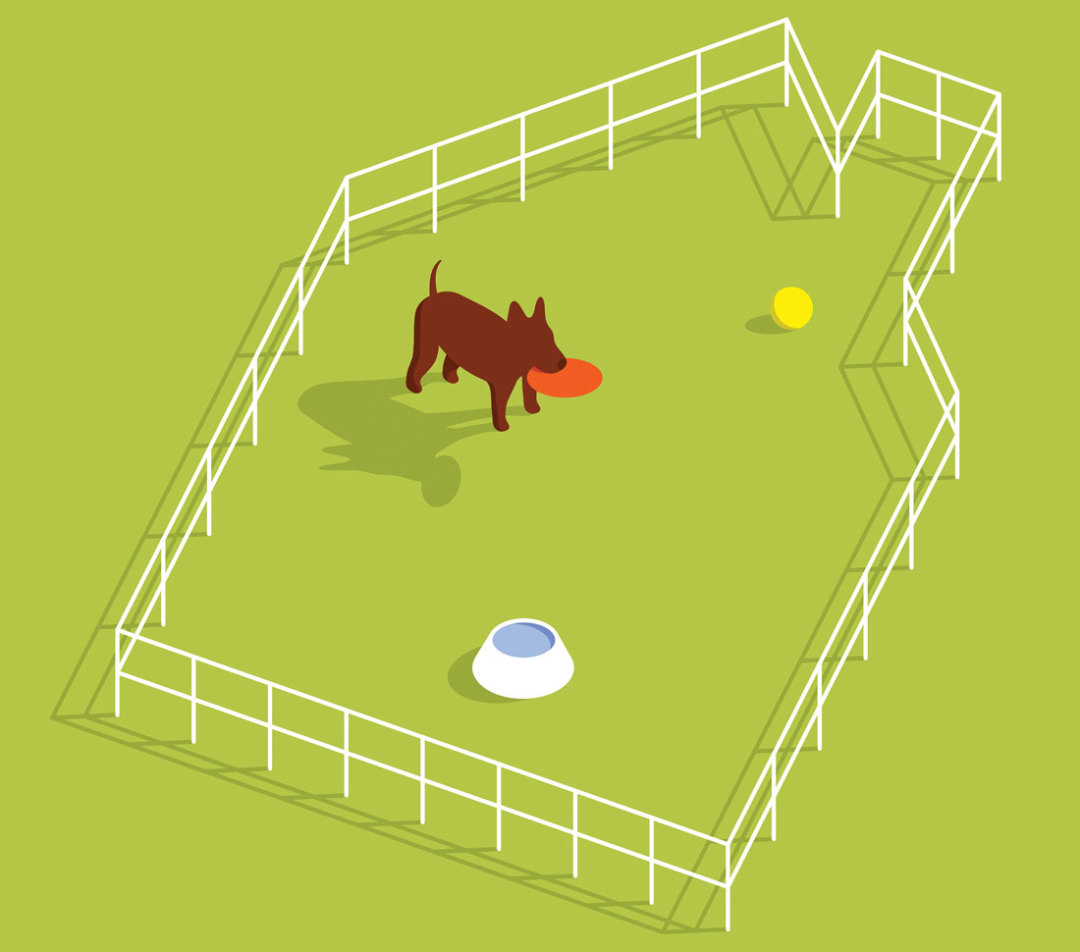Meet the Portland Animal Lovers Who Save Neglected Dogs with One Simple Fix

Image: Matt Chase
Ken Alwine pulls his SUV up to a weed-choked lot on the outskirts of Kelso, Washington, grabs a box of dog biscuits from the back, and trudges to the wire-gauge fence to greet a happily whining Norwegian elkhound named Buddy. Alwine has known Buddy for two years, ever since he and a small Portland nonprofit called Fences for Fido built a fence that changed Buddy’s life.
A neighbor had alerted Fences to Buddy’s plight. The friendly mutt was attached to a long tether, night and day, scouring for rats. Six weeks later, Buddy was unchained—protected from roving coyotes by a six-foot-high, welded-wire fence encircling the Kelso lot. A sturdy plywood shelter and a newly built doghouse, lined with a bed made from cedar chips stuffed in a burlap coffee sack, shielded him from the elements. (The cedar chips retard fleas.) All this came at no cost to Buddy’s owner.
Fences for Fido, founded in 2009 by Kelly Peterson, a Portland-based senior vice president for the Humane Society of the United States (who took inspiration from a North Carolina organization), does this for hundreds of dogs in Oregon and Southwest Washington every year. It’s become a sterling example of how focus on a single issue can help get a lot done with a little. The nonprofit’s annual budget is about $200,000; its staff consists of hundreds of volunteers. With these resources, Fences has created an all-action little world of its own: a fence for Pogo in Southeast Portland one day; another for Jack and Murphey in Beavercreek a few days after that. The organization has built nearly 1,200 fences in six years.
“It’s beautifully simple,” says Alwine, an outreach coordinator. “It takes us three hours to go out and build a fence. In three hours, we’ve changed the rest of a dog’s life.”
Fences for Fido is not the only plucky, hyperfocused nonprofit in town, of course. Urban Gleaners salvages food nearing its expiration date and delivers it to schools and shelters; Rebuilding Together rehabs homes for people who can’t afford to do so themselves. So if a few Portlanders can pick one small issue and make a huge difference, couldn’t pretty much everyone pick a cause and go for it?
A Fences project typically starts with a difficult conversation, after that first knock on a strange door. Alwine or another outreach coordinator will introduce themselves to a homeowner or tenant, explain that they work for a group that builds free fences for dogs who live on chains, and see how the conversation goes from there. Some are receptive. Some worry it’s a scam. Some insist their dogs are just fine on their leashes, thank you very much. No matter what they say, Fences keeps coming back. A dozen times, if necessary.
“It’s important that there be no judgment,” Alwine says. “Let’s talk about today. How can we make a difference today?”
In Oregon, volunteers can remind animal owners that there was a law enacted in January 2014 against tethering a dog for more than 10 hours a day—a law Fences helped write. But because the building of trust between Fences and its clients is so important, such conversations are handled delicately. Chained dogs are three times more likely to bite. Dogs are fight-or-flight animals, and constant life on a leash leaves them no choice but fight.
But Alwine advises his volunteers: “Don’t try to rationalize this. It doesn’t make any sense. It is what it is.” Sometimes, it takes weeks to persuade an owner to accept a free fence. Once, Alwine approached a man in Vancouver, Washington, who had six dogs living outside: four pit bull mixes, two Labrador mixes. Three of them stayed in the front yard, though the favorite, Tiger, was allowed inside sometimes. Three other dogs lived in the woods near the house. Full-time.
Chained or not, Alwine could see right away, the owner “loved those dogs.” He was receptive to the idea of a fence but said only that he’d “think about it.” So on the first visit, Alwine left an introductory packet and went on his way. Then he came back. Had a chance to look at that stuff yet? The fence we build, it lasts 15 years. Want some dog food? Anything to keep the conversation going. If we did build a fence, where would we put it? There’s no reason not to build a fence, right? What if we put a date on a calendar?
Once the case is made, the “build” itself is the simple part. As often as a dozen times a month, volunteers show up to an agreed-upon location. A foreman with construction experience doles out tasks and tools and supervises the quality control. Up goes a six-foot-high, 14-gauge welded-wire fence. The fences can be as long as 200 feet, and they’re built so dogs can’t dig their way out.
Three hours later, a dog’s life gets a whole lot better. It’s not hard to imagine this kind of empathy and enterprise helping a whole city improve.
Winston Ross is a Portland-based staff writer for Newsweek.




